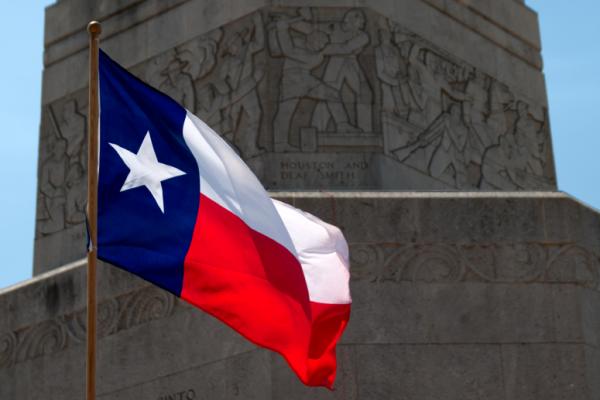Many United States residents mark Tax Day as the deadline to file their income tax details to the Internal Revenue Service (IRS). The date is usually on or around April 15. However, this deadline may be extended to accommodate holidays or extreme weather conditions.
 Tax Day is an important date to remember.
Tax Day is an important date to remember.
©iStockphoto.com/joel-t
What do people do?
A large proportion of residents of the USA have to inform the IRS of all income that they received in the previous fiscal year. Some groups, particularly veterans, pensioners and some low-income families, do not have to file a tax return unless they wish to qualify for certain types of income subsidy. Others may wait until the last moment to file their tax return and pay any money they owe. Some people may find that filing a tax return is complicated, while others may feel that they should not have to pay income tax. In the United States, income tax returns may be filed on paper or electronically. Now, people are encouraged to file a return via Internet as this is efficient and reduces the risk of mistakes being made or documents being lost in the post.
Public life
Tax Day is not a federal public holiday in the United States. Schools, post offices, stores and other businesses and organizations are open as usual. Public transport services run to their usual schedules and no extra congestion on highways is to be expected.
Background
Income tax was first introduced in the United States of America in 1861. A rate of three percent was levied on incomes above $800 per year and the resulting revenue was used to help fund the American Civil War effort. However, income tax was seen as unconstitutional and the law was repealed in 1872. The idea of a tax on personal income, at a rate of two percent, was reintroduced in the Revenue Act of 1894, but the legal status of this kind of tax was still unclear. In 1913, the “Sixteenth Amendment” to the Constitution of the United States was ratified. This cleared the way for the modern income tax system in the USA.
The details of the income tax system have changed greatly since 1913. The top rates of tax have varied enormously and were particularly high during the First and Second World Wars and the Great Depression. Individuals and families with very low levels of income do not have to pay income tax and may receive some subsidy via the tax system.
In 1913 Tax Day, or the filing deadline, was fixed on March 1. However, it was moved to March 15 in 1918 and April 15 in 1955, where it has remained since then. If April 15 falls on a Saturday, Sunday or a civil holiday, such as Patriot’s Day, the deadline is extended to the next working day. An extension due to a holiday may only affect certain states. In 2007, the residents of some states were granted an extension due to the disruption to public life in many areas caused by a huge Nor’easter storm. In some years in Washington DC, Emancipation Day may be the reason to extend the deadline for filing an income tax return (Tax Day). In 2007, the observance Emancipation Day in Washington DC had the effect of nationally extending the 2006 income tax filing deadline from April 16 to April 17. This 2007 date change was not discovered until after many forms went to print.
Courtesy of DateandTime.com
San Jacinto Day is a day of state pride for many Texans in the United States on April 21 each year. It commemorates a battle between the Texas Army and Mexican forces about 25 miles from downtown Houston, Texas, on April 21, 1836. This became known as the Battle of San Jacinto and was a turning point for Texas’ independence from Mexico.
 San Jacinto Day is a day for Texans to be proud of their history.
San Jacinto Day is a day for Texans to be proud of their history.
©iStockphoto.com/Lanier
What do people do?
On San Jacinto Day, many people show their pride at being Texan by flying the state flag of Texas, often called the Lone Star Flag, from their homes or other buildings. The main event is a re-enactment of the San Jacinto Battle at the San Jacinto Battleground State Historic Site on a Saturday close to April 21. The re-enactment by hundreds of volunteers is very realistic and includes the use of costume, canons and pyrotechnics. It also forms the center of a festival, which includes a wide range of family entertainment and highlights aspects of Texan history, culture and nature.
Public life
San Jacinto used to be, but is no longer, a public holiday in the state of Texas. Many schools are open, as are post offices, stores and other businesses and organizations. Public transport services run to their usual schedules. Some state offices are closed or partially staffed and services may be restricted. San Jacinto Day is not a public holiday in other parts of the United States on April 21.
Background
Around 1820, the area that is now Texas was part of the newly independent country of Mexico. However, many of the inhabitants wished to form the independent Republic of Texas and, in 1835, they drafted the Texas Declaration of Independence and formed a provisional government. This movement was supported by a wave of volunteers from the United States. In 1836, the president of Mexico, General Santa Anna, travelled to Texas to bring down the uprising. The beginning of his campaign was successful and the Mexican forces managed to regain control of a number of areas.
The Battle of San Jacinto occurred on April 21 in 1836 and was won by Texan forces. The battle lasted a total of 18 minutes and only nine Texan soldiers were killed and 26 wounded. However, hundreds of Mexicans were killed, injured or captured and General Santa Anna was captured in the aftermath of the battle. This event led to negotiations for Texas to become fully independent from Mexico.
Symbols
An important symbol of San Jacinto Day is the flag of the state of Texas, which is flown on homes and other buildings on April 21. This flag is known as the Lone Star Flag and consists of three parts. The flag is one-and-a-half times as wide as it is high. The vertical third, which is hung closest to the flag pole, is dark blue with a single white star and represents loyalty. The top half of the remaining two-thirds of the flag is white, to represent purity, and the lower half red, to represent bravery.
The site of the battle is now known as the San Jacinto Battleground State Historic Site, which is close to the Houston Ship Channel and the cities of La Porte and Baytown. The Historic Site is home to the San Jacinto Monument, which is 570 feet (or about 174 meters) high and the world’s tallest masonry tower. The monument is crowned by a massive stone star that represents the state of Texas.
External links
Texas State Library and Archives Commission: Official Texas State Holidays
Courtesy of DateandTime.com
National Day of Prayer calls on all people of different faiths in the United States to pray for the nation and its leaders. It is held on the first Thursday of May each year.
 People of all faiths take part in National Day of Prayer.
People of all faiths take part in National Day of Prayer.
©iStockphoto.com/ Robert Kohlhuber
What do people do?
Through the efforts of the National Day of Prayer Task Force, more than 35,000 prayer gatherings will be conducted by about 40,000 volunteers across the United States. Several million people are expected to participate in this call to prayer. Some celebrities, such as popular musician and Grammy Award winner Ricky Skaggs, will join millions of Americans in praying for the nation.
Other events in various communities across the United States may include: choirs and bands performing songs relating to prayer; community prayer breakfasts or luncheons; daytime prayer walks; and evening worship and prayer services or gatherings. National Day of Prayer is a time for people of all faiths to pray together in their own way.
Public life
National Day of Prayer is not a public holiday. Schools, post offices, stores and other businesses and organizations are open as usual. Public transport services run to their usual schedules and no extra congestion on highways is to be expected.
Background
In 1775 the Continental Congress allocated a time for prayer in forming a new nation. Over the years, there have been calls for a day of prayer, including from President Abraham Lincoln in 1863. On April 17, 1952, President Harry Truman signed a bill proclaiming the National Day of Prayer into law in the United States. President Reagan amended the law in 1988, designating the first Thursday of May each year as the National Day of Prayer.
The National Prayer Committee was formed in the United States in 1972. It went on to create the National Day of Prayer Task Force, with the intended purpose of coordinating events for the National Day of Prayer. According to the Legal Information Institute, the President shall issue each year a proclamation designating the first Thursday in May as a National Day of Prayer on which the people of the United States may turn to God in prayer and meditation at churches, in groups, and as individuals.
Courtesy of DateandTime.com
National Nurses Day is celebrated annually on May 6 to raise awareness of the important role nurses play in society. It marks the beginning of National Nurses Week, which ends on May 12, the birthday of Florence Nightingale.
 “Advocating, leading, caring” – the slogan of the American Nursing Association (ANA).
“Advocating, leading, caring” – the slogan of the American Nursing Association (ANA).
©iStockphoto.com/AlexRaths
What do people do?
On National Nurses Day celebrations and receptions are held across the United States to honor the work of nurses. Among the most popular activities are banquets, state and city proclamations, and seminars. Many nurses receive gifts or flowers from friends, family members, or patients.
Public life
National Nurses Day and National Nurses Week are observances but they not a public holidays in the United States.
Background
May 12, the final day of National Nurses Week, is the birthday of Florence Nightingale (1820-1910). The English nurse became known as the founder of professional nursing, especially due to her pioneering work during the Crimean War (1853-1856). Due to her habit of making rounds at night, Nightingale became known as “The Lady with the Lamp”.
National Nurses Week was first observed in October 1954, the 100th anniversary of Nightingale’s mission to Crimea. May 6 was introduced as the date for the observance in 1982.
Courtesy of DateandTime.com
People across the United States celebrate Flag Day on June 14 each year to honor the United States flag and to commemorate the flag’s adoption. On the same day, the United States Army celebrates its birthday.
 Flag Day honors the United States flag.
Flag Day honors the United States flag.
©iStockphoto.com/ RiverNorthPhotography
What do people do?
Flag Day falls within National Flag Week, a time when Americans reflect on the foundations of the nation’s freedom. The flag of the United States represents freedom and has been an enduring symbol of the country’s ideals since its early days. During both events, Americans also remember their loyalty to the nation, reaffirm their belief in liberty and justice, and observe the nation’s unity.
Many people in the United States honor this day by displaying the American flag at homes and public buildings. Other popular ways of observing this holiday include: flag-raising ceremonies; Flag Day services; school quizzes and essay competitions about the American flag; musical salutes; street parades; and awards for special recognition.
Organizations such as The National Flag Day Foundation are actively involved in coordinating activities centered on the event and keeping the flag’s traditions alive. Following Flag Day is Honor America Days, a 21-day period through to Independence Day (July 4) to honor America. During this period, people hold public gatherings and activities to celebrate and honor the nation.
Public life
Although Flag Day is a nationwide observance, it is not a public holiday in many parts of the United States. It is a legal holiday in a few areas in the USA, such as Montour County in Pennsylvania.
Background
On June 14, 1777, the Continental Congress replaced the British symbols of the Grand Union flag with a new design featuring 13 white stars in a circle on a field of blue and 13 red and white stripes – one for each state. Although it is not certain, this flag may have been made by the Philadelphia seamstress Betsy Ross, who was an official flag maker for the Pennsylvania Navy. The number of stars increased as the new states entered the Union, but the number of stripes stopped at 15 and was later returned to 13.
In June 1886 Bernard Cigrand made his first public proposal for the annual observance of the birth of the flag when he wrote an article titled “The Fourteenth of June” in the old Chicago Argus newspaper. Cigrand’s effort to ensure national observance of Flag Day finally came when President Woodrow Wilson issued a proclamation calling for a nationwide observance of the event on June 14, 1916. However, Flag Day did not become official until August 1949, when President Harry Truman signed the legislation and proclaimed June 14 as Flag Day. In 1966, Congress also requested that the President issue annually a proclamation designating the week in which June 14 occurs as National Flag Week.
The President is requested to issue each year a proclamation to: call on government officials in the USA to display the flag of the United States on all government buildings on Flag Day; and to urge US residents to observe Flag Day as the anniversary of the adoption on June 14, 1777, by the Continental Congress of the Stars and Stripes as the official flag of the United States.
Symbols
The American flag, also nicknamed as “Old Glory” or “star-spangled banner”, has changed designs over the centuries. It consists of 13 equal horizontal stripes of red (top and bottom) alternating with white, with a blue rectangle in the canton bearing 50 small, white, five-pointed stars. Each of the 50 stars represent the 50 states in the United States and the 13 stripes represent the original 13 colonies that became the first states in the Union.
Courtesy of DateandTime.com
Father’s Day in the United States is on the third Sunday of June. It celebrates the contribution that fathers and father figures make for their children’s lives. Its origins may lie in a memorial service held for a large group of men, many of them fathers, who were killed in a mining accident in Monongah, West Virginia in 1907.
 Father’s Day is a day for fathers and father-like figures.
Father’s Day is a day for fathers and father-like figures.
©iStockphoto.com/aldomurillo
What do people do?
Father’s Day is an occasion to mark and celebrate the contribution that your own father has made to your life. Many people send or give cards or gifts to their fathers. Common Father’s Day gifts include sports items or clothing, electronic gadgets, outdoor cooking supplies and tools for household maintenance.
Father’s Day is a relatively modern holiday so different families have a range of traditions. These can range from a simple phone call or greetings card to large parties honoring all of the ‘father’ figures in a particular extended family. Father figures can include fathers, step-fathers, fathers-in-law, grandfathers and great-grandfathers and even other male relatives. In the days and weeks before Father’s Day, many schools and Sunday schools help their pupils to prepare a handmade card or small gift for their fathers.
Public life
Father’s Day is not a federal holiday. Organizations, businesses and stores are open or closed, just as they are on any other Sunday in the year. Public transit systems run to their normal Sunday schedules. Restaurants may be busier than usual, as some people take their fathers out for a treat.
Background and symbols
There are a range of events, which may have inspired the idea of Father’s Day. One of these was the start of the Mother’s Day tradition in the first decade of the 20th century. Another was a memorial service held in 1908 for a large group of men, many of them fathers, who were killed in a mining accident in Monongah, West Virginia in December 1907.
A woman called Sonora Smart Dodd was an influential figure in the establishment of Father’s Day. Her father raised six children by himself after the death of their mother. This was uncommon at that time, as many widowers placed their children in the care of others or quickly married again.
Sonora was inspired by the work of Anna Jarvis, who had pushed for Mother’s Day celebrations. Sonora felt that her father deserved recognition for what he had done. The first time Father’s Day was held in June was in 1910. Father’s Day was officially recognized as a holiday in 1972 by President Nixon.
Courtesy of DateandTime.com
Independence Day is annually celebrated on July 4 and is often known as “the Fourth of July”. It is the anniversary of the publication of the declaration of independence from Great Britain in 1776. Patriotic displays and family events are organized throughout the United States.
 Independence Day is a patriotic holiday celebrated by Americans worldwide.
Independence Day is a patriotic holiday celebrated by Americans worldwide.
©iStockphoto.com/fstop123
Celebrate Independence Day
Independence Day is a day of family celebrations with picnics and barbecues, showing a great deal of emphasis on the American tradition of political freedom. Activities associated with the day include watermelon or hotdog eating competitions and sporting events, such as baseball games, three-legged races, swimming activities and tug-of-war games.
Many people display the American flag outside their homes or buildings. Many communities arrange fireworks that are often accompanied by patriotic music. The most impressive fireworks are shown on television. Some employees use one or more of their vacation days to create a long weekend so that they can escape the heat at their favorite beach or vacation spot.
Independence Day is a patriotic holiday for celebrating the positive aspects of the United States. Many politicians appear at public events to show their support for the history, heritage and people of their country. Above all, people in the United States express and give thanks for the freedom and liberties fought by the first generation of many of today’s Americans. The Statue of Liberty is a national monument that is associated with Independence Day.
Public life
Independence Day is a federal holiday. If July 4 is a Saturday, it is observed on Friday, July 3. If July 4 is a Sunday, it is observed on Monday, July 5. Government offices and schools are closed. Some businesses may be closed as well. In some years, many employees use a proportion of their vacation days to create a long weekend. This can cause congestion in some places, particularly towards popular holiday destinations.
There are many public events, parades, shows and fireworks displays. This may cause local disruption to traffic. Public transit systems do not usually operate on their regular timetables.
About Independence Day
In 1775, people in New England began fighting the British for their independence. On July 2, 1776, the Congress secretly voted for independence from Great Britain. The Declaration of Independence was first published two days later on July 4, 1776. The first public reading of the Declaration of Independence was on July 8, 1776. Delegates began to sign the Declaration of Independence on August 2, 1776. In 1870, Independence Day was made an unpaid holiday for federal employees. In 1941, it became a paid holiday for them.
The first description of how Independence Day would be celebrated was in a letter from John Adams to his wife Abigail on July 3, 1776. He described “pomp and parade, with shows, games, sports, guns, bells, bonfires, and illuminations” throughout the United States. However, the term “Independence Day” was not used until 1791.
Interestingly, Thomas Jefferson and John Adams, both signers of the Declaration of Independence and presidents of the United States, died on July 4, 1826 – exactly 50 years after the adoption of the declaration. It is also important to note that Native Americans lived in the country and each tribe had its own nation and government prior to the European settlers.
Courtesy of DateandTime.com
Parental figures in the United States receive the recognition for the role they play in their children’s lives on Parents’ Day. The day aims to promote responsible parenting and to recognize positive parental role models. It celebrates the special bonds of love between parental figures and their children.
 Parents’ Day in the USA recognizes that responsible parenting is important in a family.
Parents’ Day in the USA recognizes that responsible parenting is important in a family.
©iStockphoto.com/kali9
What do people do?
Parents’ Day is celebrated on the fourth Sunday each year. Citizens, organizations, and federal, state, and local governmental and legislative entities are encouraged to recognize Parents’ Day through proclamations, activities, and educational efforts to recognize, uplift and support the role of parents in bringing up their children.
The Parents’ Day Council plays an active role in celebrating and promoting Parents’ Day through a range of events and activities. For example, the council honors “Parents of the Year” at local, state and national levels. Those who have been nominated or selected are people who exemplify the standard and ideal of positive parenthood. Exemplary parents from each state are nominated for “National Parents of the Year”.
Parents’ Day is a popular time for people to send cards and gifts, including flowers, cakes and food hampers, to those who play an important role as a positive parental figure in their lives. It is also a time for families to come together for lunches or dinners. Special tributes to parental figures who are seen as role models are made through local announcements, at church services, or at local community events. Parents’ Day proclamations and rallies have been held in recent times and involved organizations such as the United Civil Rights Councils of America.
Public life
Parents’ Day is a national observance but it is not a public holiday in the United States.
Background
Parents’ Day promotes the message that the role of the parent is important in human development, which requires investment, focus, and commitment. In 1994 President Bill Clinton signed into law a resolution adopted by the US Congress to establish the fourth Sunday of every July as Parents’ Day. This day is similar to Mother’s Day and Father’s Day. According to the Congressional Resolution, Parents’ Day is established for “recognizing, uplifting, and supporting the role of parents in the rearing of children” (cited in the National Parents’ Day Council website).
Symbols
Images of people engaged in active learning activities with their children are often used in photos, posters, paintings, stickers and sketches to promote Parents’ Day. Images of flowers are also used to promote the day. The messages that organizations try to portray through these images are that: commitment is a core family value; parental responsibilities are important to children’s growth and development; and that unconditional love is needed for a strong bond between parental figures and their children. Parental figures include biological, foster or step-parents.
External links
Courtesy of DateandTime.com
Lyndon Baines Johnson Day is an annual state holiday in Texas in the United States on August 27. It celebrates the birthday of Lyndon Baines Johnson, popularly known as “LBJ”, who was the 36th president of the United States.
 Lyndon Baines Johnson Day commemorates the life and work of the 36th president of the United States.
Lyndon Baines Johnson Day commemorates the life and work of the 36th president of the United States.
©iStockphoto.com/Maher
What do people do?
A range of special programs, events, and parties are held Lyndon Baines Johnson Day across Texas and other parts of the United States, such as Washington DC. On this day, many people remember famous speeches, including one about a “Great Society”, and the changes that took place across the nation during Johnson’s presidency.
Public life
Lyndon Baines Johnson Day is a partial staffing holiday in Texas so state government employees are entitled take a day off but state offices remain open with the required staff numbers. State offices are not closed on another day when designated holidays fall on a Saturday or Sunday. Many public transport schedules do not change on Lyndon Baines Johnson Day in places such as Austin, Dallas, and Houston in Texas. However, those unsure of their schedules may need to contact the public transit centers.
Background
Lyndon Baines Johnson was born on August 27, 1908. He is often known as “LBJ” and was the 36th president of the United States, serving from 1963-1969. In 1963 Johnson took on the role as the nation’s president after president John F Kennedy was assassinated. In an address before Congress Johnson pledged support for Kennedy’s legislative agenda that included civil rights and education legislation.
In conjunction with the civil rights movement, Johnson overcame southern resistance and convinced Congress to pass the Civil Rights Act of 1964, which outlawed many forms of racial segregation. Johnson signed it into law on July 2, 1964. In 1965, he achieved passage of a second civil rights bill, the Voting Rights Act to outlaw discrimination in voting and to allow many African Americans in the southern states to vote for the first time. In 1965 the “Great Society” program became the agenda for Congress:
- Aid to education.
- Protection of civil rights (including the right to vote).
- Urban renewal.
- Medicare.
- Conservation and beautification.
- Control and prevention of crime and delinquency.
- Promotion of the arts.
- Consumer protection.
Johnson was also known for escalating the United States’ involvement in the Vietnam War, which was opposed by many Americans.
After leaving the presidency in 1969, Johnson returned to Johnson City, Texas. During his retirement he wrote his memoirs called The Vantage Point, taught students and participated in a series of national symposia on the critical issues of modern America. Johnson died at his ranch on January 22, 1973, and is buried in the family cemetery at the LBJ Ranch near his birthplace. Shortly after his death, the Texas State Legislature created a legal state holiday to be observed every year on August 27 to honor Johnson. The holiday was first celebrated on August 27, 1973.
Symbols
Lyndon Baines Johnson’s 100th birthday was celebrated in 2008. The “Can-Do” centennial logo is used to commemorate Lyndon Baines Johnson Day and related events celebrating his 100th birthday. It features the number 100 with Johnson’s signature Resistol hat representing the second zero. The logo’s text reads “Lyndon B. Johnson Centennial Celebration – Celebrating His Can-Do Spirit”. This slogan represents the leadership, commitment, and optimism of Johnson and his wife, Claudia, who was known as “Lady Bird” to her friends.
Many places have been named after Lyndon Baines Johnson, including the Lyndon B. Johnson Space Center, the Lyndon Baines Johnson Memorial Grove, the Lyndon B. Johnson State Park and Historic Site, the LBJ School of Public Affairs, the Lyndon B. Johnson National Grassland, and the LBJ Runway at Austin-Bergstrom International Airport. LBJ also has been mentioned in popular culture through music and film.
External Links
Lyndon Baines Johnson Centennial Celebration: Celebrating His Can-Do Spirit
Courtesy of DateandTime.com
